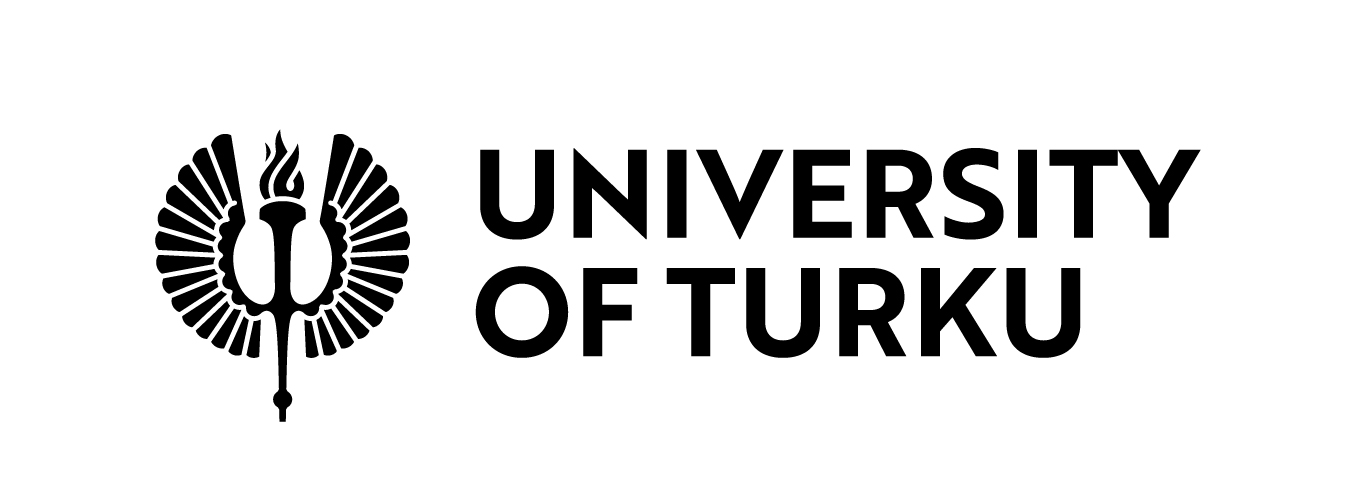Following fields are empty!
Quantum Information Processing
Quantum Information Processing is an international forum for the publication of high-quality, peer-reviewed original papers, review articles, letters (or short communications), commentary, and electronic rapid communications on all aspects, theoretical and experimental, of quantum information processing.Coverage includes such topics as Quantum Computation; Quantum Communication; Quantum Information Theory; Quantum Control; Computation Device Physics; and Applications of QIP Ideas to other Disciplines.
Quantum Science and Technology
A multidisciplinary, high impact journal devoted to publishing research of the highest quality and significance covering the science and application of all quantum-enabled technologies.
Quarterly Report of RTRI (Railway Technical Research Institute) (Japan)
R and D: Research and Development Kobe Steel Engineering Reports
REACH
- Benefits from Space-Based Research for Health on Earth
- Commercial Human Spaceflight
- Exo- and Astrobiology
- Satellite remote sensing technology and telemedicine for disease prevention and disease control
- Search for Extraterrestrial Intelligence (SETI)
- Space Biology
- Space Habitation
- Space Physiology, Medicine and Psychology
- Space Radiation and Radiation Biology
- Spin-off Applications from Human Spaceflight
- Terrestrial Applications of Space Life Sciences Developments
REACH aims to meet the needs of readers from academia, industry, and government by publishing comprehensive overviews of the science of humans in space, including future human space exploration, life sciences research in space, and terrestrial applications derived from spaceflight that benefit humankind.
Special emphasis will be put on summarizing the most important recent developments and challenges in each of the covered fields, and on making published articles legible for a non-Space Life Scientists audience.
The Editorial Board of REACH, consisting of:
- Rupert Gerzer (Editor-in-Chief)
- Peter Gräf, DLR, Germany
- Jeffrey Davis, NASA, USA
- Oleg Orlov, IMBP, Russia
- Yinghui Li, Chinese Astronaut Centre, China
- from Western Europe and Africa please submit to Peter Gräf;
- from the Americas and Australasia please submit to Jeffrey Davis;
- from Russia and Eastern Europe please submit to Oleg Orlov;
- from Asia please submit to Yinghui Li;
In addition, authors can also submit non-solicited review articles. Please note that original research articles are not published in REACH. The Journal will publish four issues per year containing six to eight review articles each.
REVISTA EDUCACION EN INGENIERIA
Robotics and Automation, Mechatronics, Artificial Intelligence (incl. Robotics), Control, Computational Intelligence
RSC Applied Interfaces
RSC Applied Interfaces is a dedicated, interdisciplinary reference journal for cutting-edge research on the applications of surfaces and interfaces. In addition to the applied focus, work considered for publication in RSC Applied Interfaces is expected to be highly original and of top quality. Research papers should highlight the role of interfaces (morphology and composition) and interfacial processes in determining a material’s properties and functionalities. The journal seeks to report major scientific advances beyond the state of the art, at the cutting edge of this interdisciplinary field. Our RSC Applied journals are dedicated to materials science research with a strong focus on innovation in the application, and sit alongside Journals of Materials Chemistry A, B and C in terms of quality and impact.
RSC Applied Polymers
RSC Applied Polymers is a leading international journal for the application of polymers, including experimental and computational studies on both natural and synthetic systems. The journal is a premier cross-disciplinary publishing home for scientific research that leverages polymeric materials in a range of applications, welcoming high-impact advances made possible with polymers across materials, biology, energy applications, and beyond. Polymer researchers across chemistry, materials science, biology, and engineering, are all welcome to share timely and impactful contributions, connecting fundamental scientific insights to performance-related metrics. The journal welcomes research on the application of polymers in different areas, and the relationship to structure and/or composition, as afforded by synthesis and/or processing. Our RSC Applied journals are dedicated to materials science research with a strong focus on innovation in the application, and sit alongside Journals of Materials Chemistry A, B and C in terms of quality and impact.
RSC Mechanochemistry
RSC Mechanochemistry focuses on the publication of innovative research that advances the fundamental understanding and application of the use of mechanical force for driving and controlling chemical reactions and materials transformations in the gas, liquid, and solid states. As mechanochemistry is where chemistry and mechanics meet, and involves the interaction of mechanical energy with matter at the molecular, supramolecular, and bulk materials levels, it encompasses not only areas such as sustainable chemical synthesis, but also tribochemistry, chemo/mechanical transduction (e.g. polymer mechanochemistry, mechano-biology, photo-mechanochemistry), and mechanical alloying. Submissions on all aspects related to mechanochemistry and its role in enhancing and broadening sustainable chemistry are welcome.
RSC Pharmaceutics
RSC Pharmaceutics is a new gold open access journal leading the way in the field of Pharmaceutics. This journal publishes research focused on formulating a drug into a medicine, with the intention of achieving controllable drug delivery with high efficacy. Research published in RSC Pharmaceutics promotes step-change science in the field of Pharmaceutics, and, as such, all submissions must show clear innovation, be scientifically sound, and have a significant impact on the field. Research sharing new scientific findings from across the areas of chemistry, materials science, biomedical sciences, pharmaceutics and drug delivery are all welcomed. Topics include but are not limited to: • Formulation and design of medicines • Design and characterization of correct dosage forms • Physicochemical and biological properties of drugs and their carriers • Drug delivery devices and their mechanisms of release
RUSSIAN JOURNAL OF BUILDING CONSTRUCTION AND ARCHITECTURE
Radiation Detection Technology and Methods
Radio Journal: International Studies in Broadcast & Audio Media
Radio Science
Radio Science carries original scientific contributions on all aspects of electromagnetic phenomena related to physical problems. These contributions can include propagation through and interaction of electromagnetic waves with geophysical media, biological media, plasmas, and man-made structures. Coverage includes, but is not limited to, the application of electromagnetic techniques to remote sensing of the Earth and its environment, telecommunications, signals and systems, the ionosphere, and radio astronomy. All frequencies (including optical) are considered.
Radioelectronics and Communications Systems
The journal publishes present-day theoretical works on radioelectronics, results of research efforts, progressive Ukrainian investigations in the field of radio engineering and radioelectronics, proceedings of conferences, chronicles and bibliographies. The main journal headings include scanner assembly, feeder, and microwave engineering: vacuum and gas-discharge devices: solid-state electronics and integral circuit technology: optical location, communication and information processing systems: quantum electronic: radiolocation and radionavigation systems: and theoretical bases of radio engineering.
Radioengineering: Proceedings of Czech and Slovak Technical Universities
For the last 20 years, the Radioengineering journal quarterly has been publishing original scientific and engineering papers from the area of radio engineering and science.The nature of the Radioengineering journal is interdisciplinary. This journal is interested in covering a wide area of radio electronics starting from applied electromagnetism, wave propagation and antennas, continuing to high-frequency circuits and optoelectronics, and finishing with signal processing and multimedia, wireless communications and telecommunications and finally biomedial engineering topics. The journal can, therefore, present a wide view on all aspects of today's radio engineering and science, initiate a mutual inspiration between disciplines; and support their cohesion in the frame of complex radio electronic systems.The Radioengineering journal makes an effort to encourage a younger generation of scientists and engineers. The journal offers them their first publication opportunity and gives them their first experience in writing a scientific paper. Independent reviewers carefully review each submitted paper, and attempt to explain its stronger and weaker aspects to the authors in detail.Each June and December, the Radioengineering journal prepares special issues focused on selected topics of importance and current interest. In the past, special issues published in December were devoted to mobile communications, multimedia, utilization of MATLAB, advances in antennas and microwaves, electromagnetic compatibility, advanced electronic circuits, both analog and digital, from low frequencies to millimeter waves, metamaterials, optical free space communication, cognitive radio etc. The special issues published in June usually contain papers focused on a very narrow area of the radio engineering field.The Radioengineering journal is the member of the Sister Societies' Publications of the IEEE Communications Society. Since volume 16 (2007), the Radioengineering journal has been selected for coverage in Thomson Reuters products and custom information services; the journal is indexed and abstracted in Science Citation Index Expanded and Journal Citation Reports. The Radioengineering journal is covered by the Directory of Open Access Journals, is listed in INSPEC and covered by SCOPUS. That way, a good accessibility of the published matter is ensured.
Radiophysics and Quantum Electronics
Radiophysics and Quantum Electronics reports on topics such as: radio astronomy; plasma astrophysics; ionospheric, atmospheric and oceanic physics; radiowave propagation; quantum radiophysics; physics of oscillations and waves; physics of plasmas; statistical radiophysics; electrodynamics; vacuum and plasma electronics; acoustics; and solid-state electronics. Radiophysics and Quantum Electronics is a translation of the peer-reviewed Russian journal Izvestiya VUZ. Radiofizika, published by the Radiophysical Research Institute and N.I. Lobachevsky State University at Nizhnii Novgorod, Russia.
Radioprotection: A Journal on Radiation Protection and Radiological Protection
Radioprotection publishes articles on all aspects of radiological protection, including non-ionising as well as ionising radiations. Fields of interest range from research, development and theory to operational matters, education and training. The very wide spectrum of its topics includes (theoretical and practical aspects): dosimetry, instrument development, specialized measuring techniques, epidemiology, biological effects (in vivo and in vitro) and risk and environmental impact assessments.

